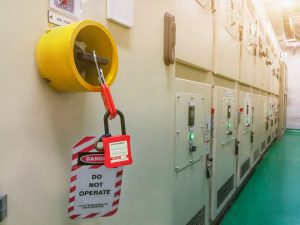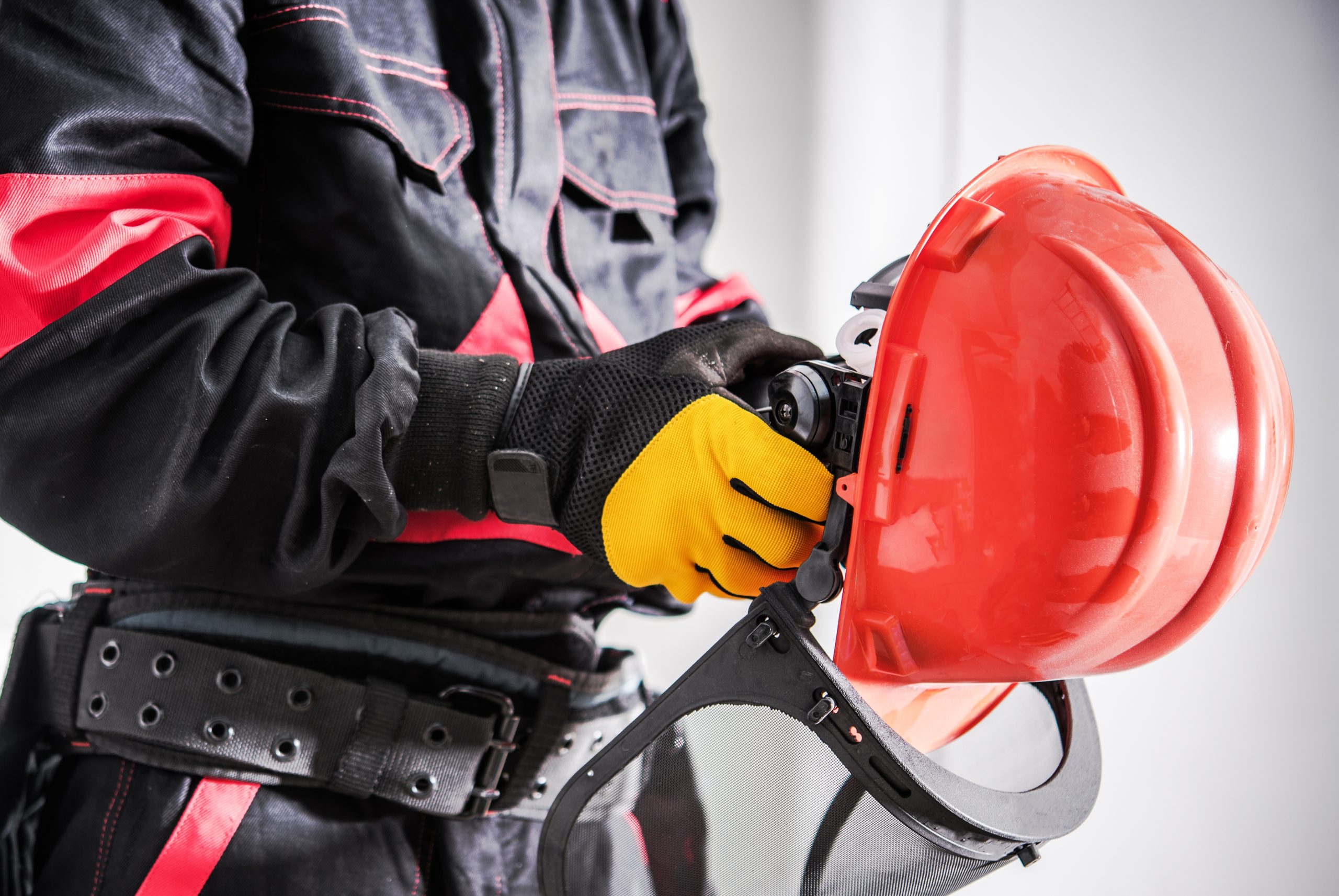Hazardous Energy protection is crucial for your team’s safety and for operating a successful manufacturing facility.
In the USA, about three million workers servicing equipment face a high risk from hazardous energy. These include craft workers, machine operators, and laborers.
The most effective way to guard against the risks of hazardous energy is Lockout/Tagout procedures. Unexpected energization upon startup of the machines or equipment or release of stored energy can cause injury to employees.
“Lockout/Tagout” (often shortened to LOTO) refers to specific practices and procedures to safeguard employees from the release of hazardous energy during startup, service, or maintenance activities.
What is Hazardous Energy?
Hazardous energy is any type of unexpected energization that can cause injury or death if not properly controlled. This can include electrical, mechanical, hydraulic, pneumatic, chemical, thermal, or other types of energy.
The risks from hazardous energy can be serious or fatal. Some of the most common risks include:
● Electric shock: Electrical shock can occur when a person comes into contact with an energized electrical conductor. This can cause burns, muscle contractions, cardiac arrest, or death.
● Mechanical injury: Mechanical injury can occur when a person is caught in or between moving parts of machinery. This can cause crushing, amputation, or other serious injuries.
● Hydraulic injury: Hydraulic injury can occur when a person is struck by a high-pressure jet of fluid. This can cause severe bruising, lacerations, or even death.
● Pneumatic injury: Pneumatic injury can occur when a person is struck by a high-pressure jet of air. This can cause similar injuries to hydraulic injuries.
● Chemical injury: Chemical injury can occur when a person comes into contact with a hazardous chemical. This can cause burns, irritation, or even death.
● Thermal injury: Thermal injury can occur when a person is exposed to high temperatures or flames. This can cause burns, scarring, or even death.

What Is Hazardous Energy Lockout / Tagout?
Hazardous energy lockout/tagout (LOTO) is a safety procedure used to prevent the accidental release of hazardous energy during the maintenance or servicing of machinery or equipment. LOTO requires that a worker turns off and disconnects the machinery or equipment from its energy source before performing any service or maintenance. The authorized employee should lock or tag the energy-isolating device to prevent the release of hazardous energy. These steps help to verify that the hazardous energy has been isolated effectively.
Lockout/Target procedures ensure that the machinery or equipment cannot be started up or energized without first removing the lockout or tagout devices.
Four Steps for Hazardous Energy Safety
To ensure workplace safety, there are four basic steps involved in LOTO:
1. Energy isolation. The first step is to isolate the machinery or equipment from all sources of hazardous energy. This may involve turning off switches, removing fuses, or blocking valves.
2. Lockout. Once the machinery or equipment has been isolated from all sources of hazardous energy, a lockout device is applied to each energy-isolating device. Lockout devices can be padlocks, chains, or other devices that prevent the energy-isolating devices from being turned on or opened.
3. Tagout. In addition to lockout devices, a tagout device is also applied to each energy-isolating device. Tagout devices are brightly colored and prominently displayed to warn others that the machinery or equipment is not to be energized.
4. Verification. Once the lockout and tagout devices have been applied, a final verification is performed to ensure that the machinery or equipment cannot be energized. This may involve checking the lockout and tagout devices, as well as visually inspecting the machinery or equipment to make sure that it is not energized.
LOTO is an important safety procedure that can help to prevent serious injuries or fatalities. By following the four basic steps of LOTO, employers can help to keep their workers safe.

What are the OSHA Requirements for Lockout/Tagout?
In the United States, OSHA requires employers to implement LOTO procedures for machinery or equipment that is capable of generating hazardous energy. The OSHA standards for Lockout/Tagout policy (Standard number 1910.147) apply to all general industry workplaces, including construction, manufacturing, and warehousing.
OSHA requires employers to implement a lockout/tagout (LOTO) program to protect employees from energization or startup of machinery and equipment or the release of hazardous energy
during maintenance or service.
The OSHA Lockout/Tagout safety standard requires employers to identify all machinery and equipment that is capable of generating hazardous energy.
To ensure the OSHA standards are met, it is advisable to implement a written LOTO procedure that includes the following steps:
Energize Isolation
The first step is to isolate the machinery or equipment from all sources of hazardous energy. This may involve turning off switches, removing fuses, or blocking valves.
Lockout
Once the machinery or equipment has been isolated from all sources of hazardous energy, a lockout device is applied to each energy-isolating device. Lockout devices can be padlocks, chains, or other devices that prevent the energy-isolating devices from being turned on or opened.
Tagout
In addition to lockout devices, a tagout device is also applied to each energy-isolating device. Tagout devices are brightly colored and prominently displayed to warn others that the machinery or equipment is not to be energized.
Verification
Once the lockout and tagout devices have been applied, a final verification is performed to ensure that the machinery or equipment cannot be energized. This may involve checking the lockout and tagout devices, as well as visually inspecting the machinery or equipment to make sure that it is not energized.

How To Train Your Team To Avoid Hazardous Energy Risks
The better informed your manufacturing or construction works are, the lower their risk of injury. Here are some additional tips for implementing Lockout/Tagout (LOTO) training:
● Train all employees who will be working on or near machinery or equipment that is subject to Lockout/Tagout on the proper procedures.
● Develop and implement a written Lockout/Tagout procedure that includes all of the steps outlined above.
● Inspect and test Lockout/Tagout safety procedures regularly to ensure that they are being followed correctly.
● Enforce Lockout/Tagout procedures consistently.

How Employers Can Help Keep Their Team Safe
By following these requirements, employers can help to protect their employees from the hazards of hazardous energy.
Here are some additional tips for implementing LOTO:
● Use lockout devices that are the correct size and type for the energy isolating devices that they will be used on.
● Make sure that lockout and tagout devices are clearly visible and cannot be easily removed.
● Do not use lockout or tagout devices as a substitute for proper machine guarding.
● Develop a system for tracking lockout and tagout devices to ensure that they are not left on machinery or equipment when they are not needed.
● Require employees to verify that the machinery or equipment is properly locked out or tagged out before they begin work.
● Require employees to remove their lockout or tagout devices only after they have completed their work and have verified that the machinery or equipment is safe to operate.
By following these tips, manufacturing facility and construction employers can help to ensure that their Lockout/Tagout program is effective and that their team is protected from the risks of hazardous energy.

Gottstein Corporation is an industry leader in industrial and commercial contracting. Our team of highly motivated project managers is dedicated to your satisfaction from start to finish. For a full list of tools and services, visit our services page.
https://www.gottsteincorporation.com/services/

